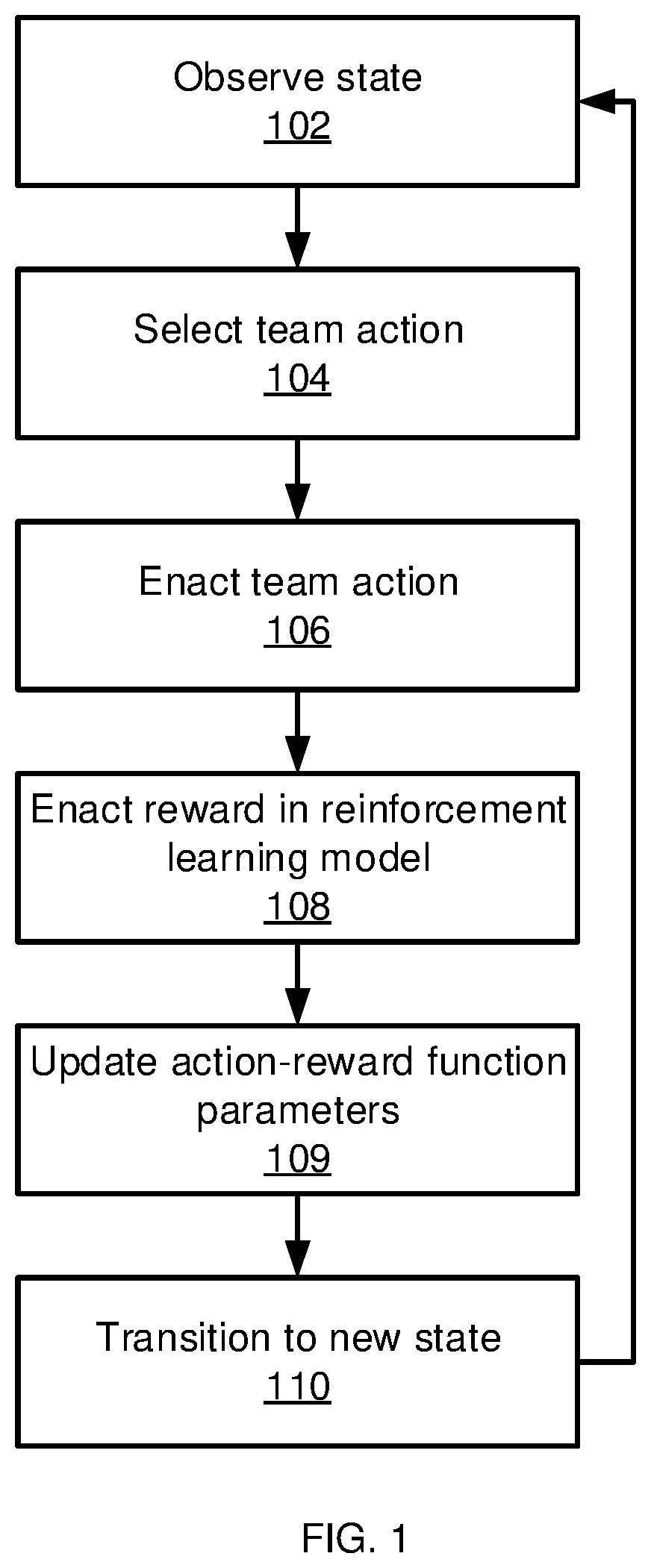Determinantal reinforced learning in artificial intelligence
a technology of artificial intelligence and determinant, applied in the field of reinforcement learning, can solve the problems of large combinatorial space defined by possible actions, computational intractable computation of such a table of values,
- Summary
- Abstract
- Description
- Claims
- Application Information
AI Technical Summary
Benefits of technology
Problems solved by technology
Method used
Image
Examples
Embodiment Construction
[0011]Embodiments of the present invention use a matrix of parameters for an approximator of an action-value function for reinforcement learning. A determinant of the parameter matrix is used to approximate the action-value function, which helps capture diversity in team actions when multiple agents are being considered. The present embodiments can thereby deal with partial observability and train a time-series model in an end-to-end manner. The present embodiments substantially outperform reinforcement learning approaches that have previously been used to deal with a high dimensional action space.
[0012]The present embodiments address the problem of controlling multiple agents in a collaborative manner. For example, players of a team that want to learn from their experience of how to collaboratively play to win a game, or controlling multiple robots to accomplish a task that cannot be handled by a single robot, are scenarios where multiple independent agents make decisions in furthe...
PUM
 Login to View More
Login to View More Abstract
Description
Claims
Application Information
 Login to View More
Login to View More - R&D
- Intellectual Property
- Life Sciences
- Materials
- Tech Scout
- Unparalleled Data Quality
- Higher Quality Content
- 60% Fewer Hallucinations
Browse by: Latest US Patents, China's latest patents, Technical Efficacy Thesaurus, Application Domain, Technology Topic, Popular Technical Reports.
© 2025 PatSnap. All rights reserved.Legal|Privacy policy|Modern Slavery Act Transparency Statement|Sitemap|About US| Contact US: help@patsnap.com



